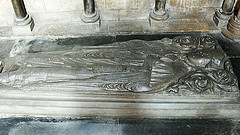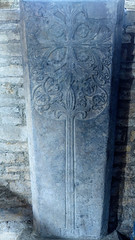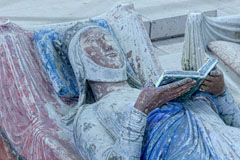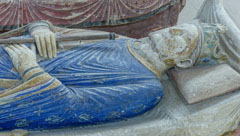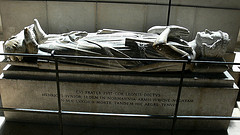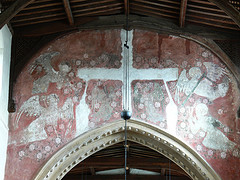In the 13th century (c. 1200–1300), church monuments were effigial tombs, cross slabs, and early brasses, emerging as Gothic art replaced Romanesque. They focused on piety, feudal status, and intercession, with stiff, symbolic figures.
Romanesque
Set into a 13th century window, in the south ambulatory of the choir (bay 44) of Chartres Cathedral, this is one of the most celebrated medieval artworks in the Cathédrale Notre-Dame de Chartres.It dates primarily to c. 1180 CE, with later additions around 1225 CE, making it a rare survivor from the pre-1194 fire that destroyed the earlier Romanesque cathedral.
This finely carved coffin lid features a long-stemmed cross whose arms terminate in deeply incised, curling foliage, a design symbolising both the Cross of Christ and the Tree of Life. The leafy ornament, known as a foliated cross, became popular in the 13th century and is often associated with clerical burials or those of prominent parishioners.

